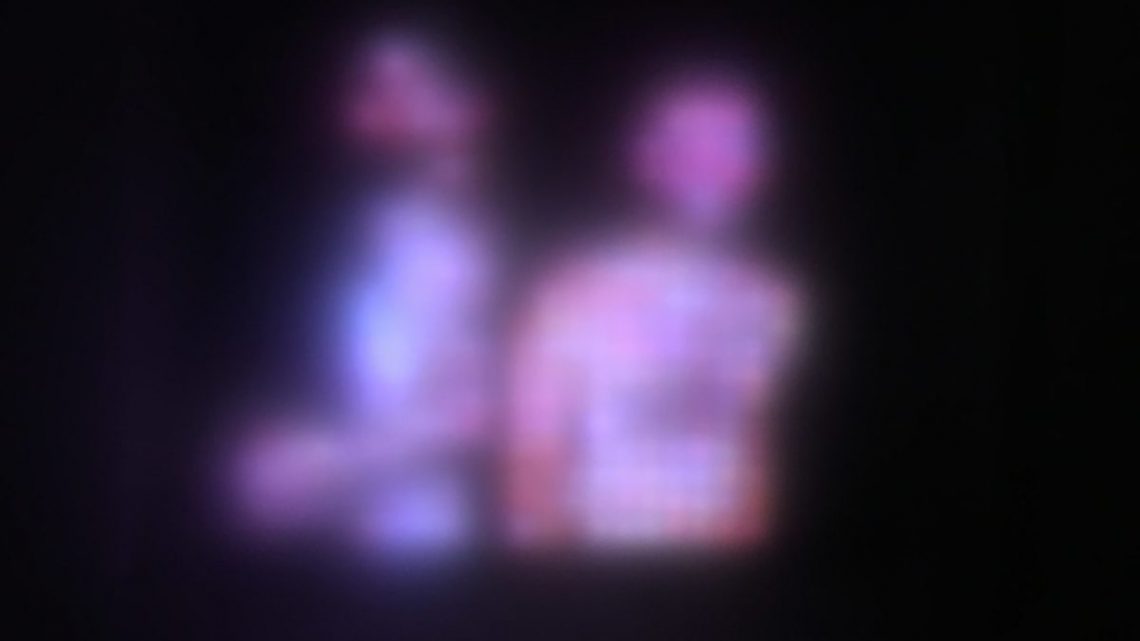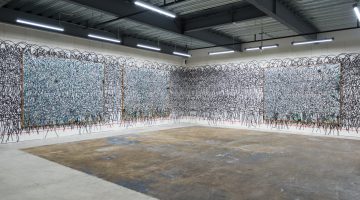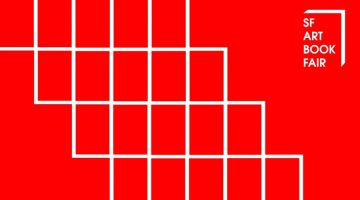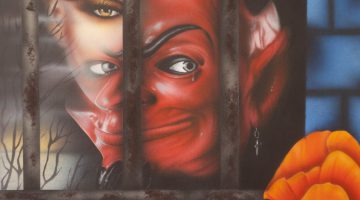Since 1979 Evie Leder has been looking at things you are not supposed to. In our conversation, she discusses objects, portraiture, butterfly collections, ghostly presentations, and LEDs.
This is the first recorded conversation from the studios at Minnesota Street Project to be published in SFAQ. In following issues, artists from the program will document varied discussions related to their practice.
Let’s talk about the intimacy of your work and the intimate experience for the viewer. Can you speak to that? The relationships between your production, your thoughtful display, and the audience—
For me, it comes down to this idea of looking and being seen. I’m a voyeur. I’ve chosen to look deeply as part of my practice.
For most of my life since I was a teenager, I have been looking at things you are not supposed to look at. I remember the first photographs I took were in high school photography class and I made prints of a woman’s legs stretched horizontally across the paper. The obviously unshaven, female legs unsettled everybody in school, including my photo teacher. I like to think that it disrupted gender rigidity in some small way in 1979.
The idea of looking and being seen is so fundamental to our binary gender systems. I’m thinking of some ideas that really opened my eyes in college like Laura Mulvey’s essay “Visual Pleasure and Narrative Cinema” or philosopher Marilyn Frye talking about the male gaze and the lesbian gaze. Her metaphor is: women are acting on stage and men are viewing the women on stage. The queers are backstage taking in everything from a different perspective. I like to share this perspective, from backstage.
Do you want to talk about the subjects in your series The Objects being on their side?
Presenting the men horizontally is my invitation to the audience to ask questions. I was thinking of Jasper Johns really, and how he would paint a number, or a flag, or some other hugely symbolic thing and get you to think about paint texture and forget for a moment that you are looking at a flag or a number. I wanted to do a bit of that with The Objects—with the idea of maleness, even if you think, “Is this a mistake?” or “Why is it displayed like this”?
People tell me it makes them think about gravity, or death, or a rocket ship, or breath—or they could hear things when the men would stretch after a time of non-movement. I want to get viewers to forget, even if for just a second, that you are looking at a naked guy.
I think of these works as my butterfly collection. I get to display them. And I get to examine questions like: “What does it mean to be a man?” and “How are these people different than me?” And, if I am lucky, I get other people to also look at them. I have created small moments within the works where the men are still, where they move, stretch, their eyes are open or closed. At the halfway mark, each one turns from front to back, activating the whole gallery at one time.
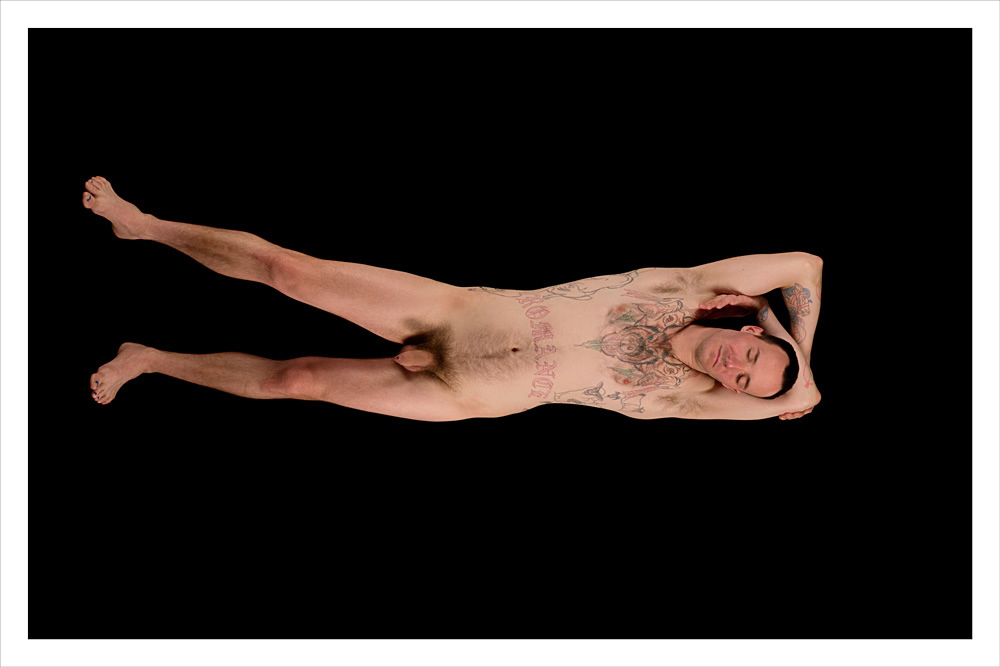
The Objects; Object Number Two, 2014. HD multiple video projection installations, archival pigment print on Hahnemuhle Photo Rag archival paper. Featuring Mica Sigourney. Courtesy of the artist and Black and White Projects.
I like that they are a butterfly collection.
They are! And then there is the documentation of a community in a place and time. The Objects is a slice of the queer arts in San Francisco in 2014. I started with a list of men who had performed in the nude in public. This led me to folks like Brontez Purnell, Mica Sigourney, Seth Eisen, Keith Hennessy, and Justin Chin. The Objects includes recordings of each of these men at a time and place. It is an archive of sorts. Justin Chin passed away last year. He was so sweet when he posed; he even returned to let me re-shoot when there was a technical issue. He was an incredible writer and performer and had posed twice for women who were interested in reframing gender and shooting images of men.
Your images have become ghostly in their presentation, balancing between video and new technology. It’s layered. And maybe it’s more approachable because of the translucent spirits involved: “I can handle this . . . I think that’s a body.” Through technology you seem to naturally be following your desire towards something visceral.
I love the dreaminess that these diffused low-resolution panels create. I think visceral is the right term! I’m at a moment where I have just made new tools for myself to explore the movement of light, bodies, color and shape. It’s an exciting moment for me—also being at the Minnesota Street Project studios. I’m about to embark on the second group of works in Kaddish. These will be a gift to my late sister who had a really rough life. She loved riding motorcycles with the wind against her body, so I’m going to make some works that would speak to her joys.
I think new technologies give us frameworks to create work, and to focus the work. I’m interested in the LED work specifically because it’s low resolution. These custom electronics provide the backbone of my current work and allow me to work more abstractly. I can be very literal in my work and it is forcing me to play, and allowing me to explore ideas that are not always so cut and dry.
I love that there is physicality to the new work. It’s not simply a projection or a video on a TV screen. It’s hand made. I love that part of my art making process is now about soldering, hanging things on the wall, holding something up and seeing how it looks, trying again, trying something different. I like how my work is getting more focused on process and materials. I spend a lot of time now in hardware stores looking at materials and imagining how I might use this or that!
